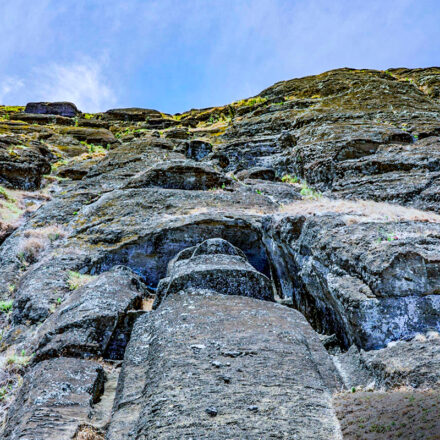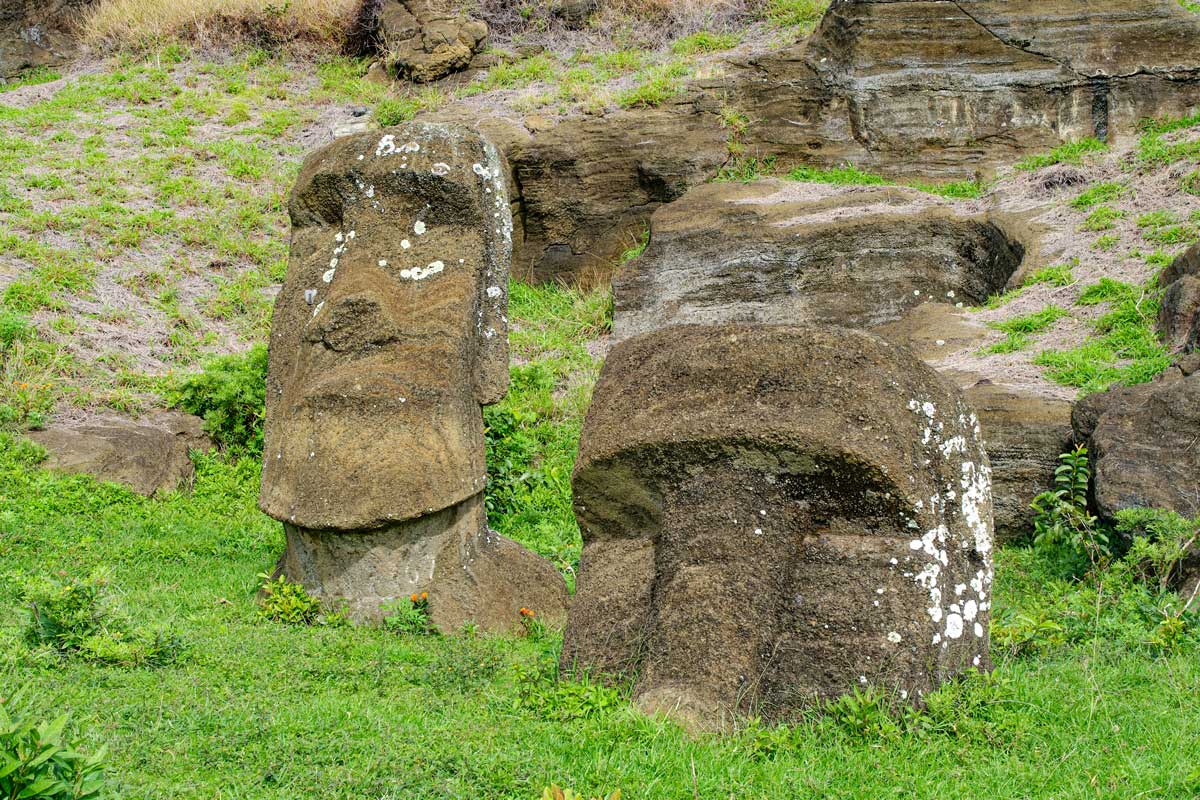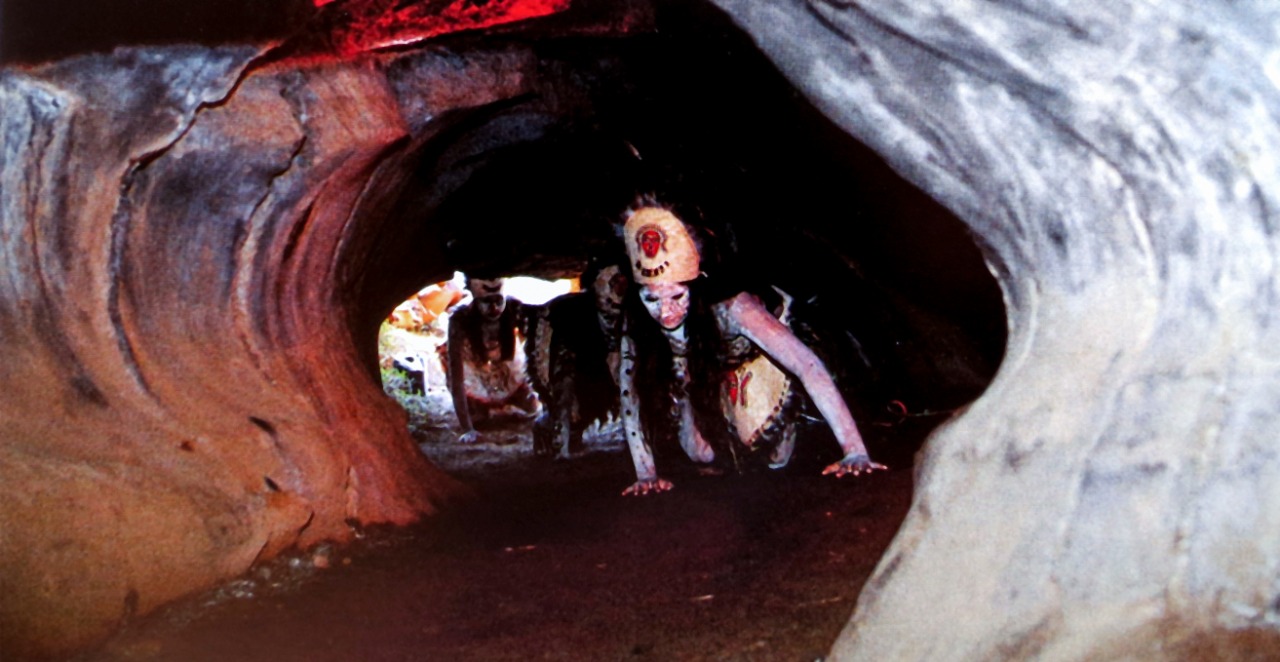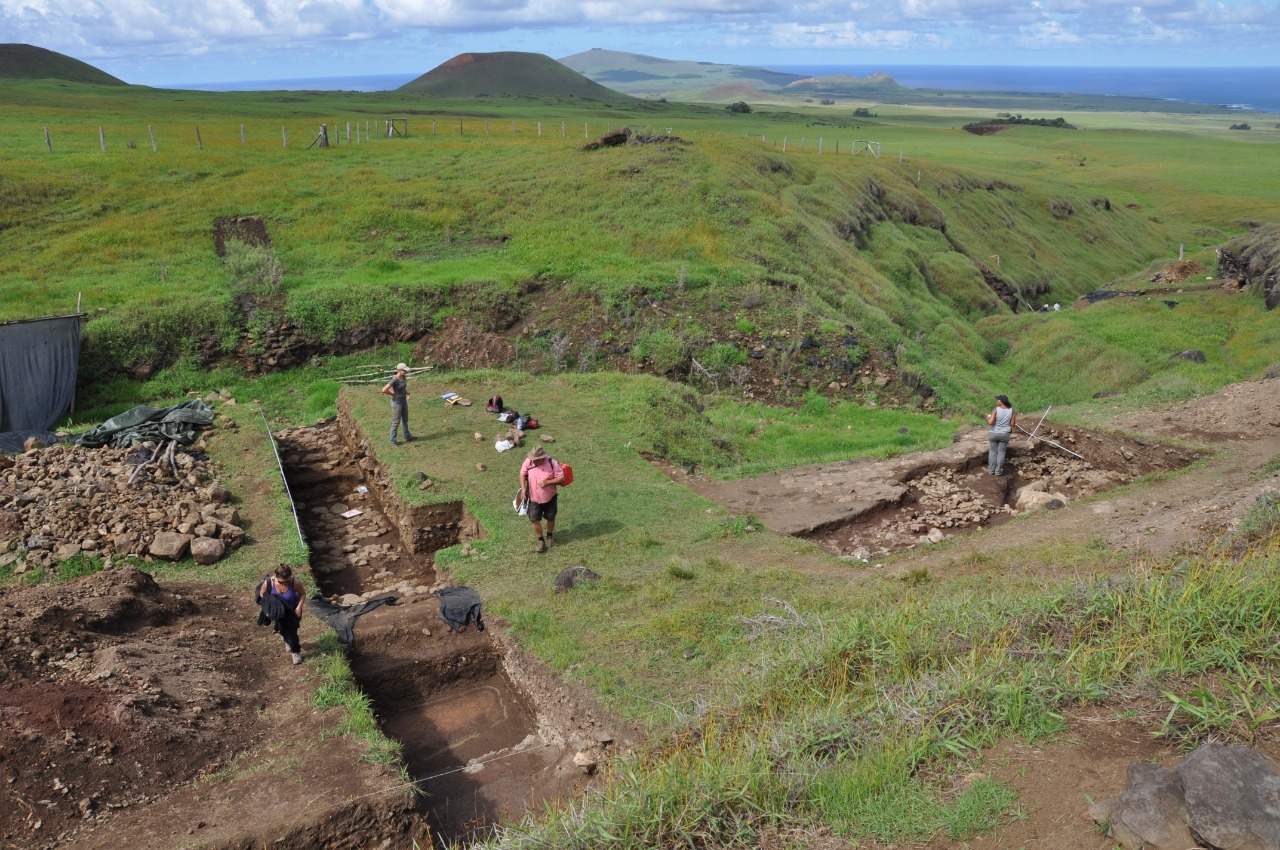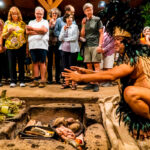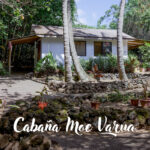Rock Paintings from Orongo
The commander of the German battleship “Hyäne”, at anchor in the harbor of Valparaiso, was ready to set sail to Samoa when he received the order to visit and study the remains of an ancient culture on Easter Island for the Royal Museum of Berlin. After 24 days of navigation, they sighted the small island and dropped anchor in the bay of Huareva at Vaihú. Commander Geisler was graciously received by a European, Alexander Salmon, who introduced himself as a member of the Tahitian royal family and the representative of the Tahitian firm, Brander. With his assistance, the Germans were able to visit the Island and complete the ethnological research that had been requested. In their reports, we can read that : “The inhabitants are of a Polynesian-Caucasian aspect, with no more than 150 persons living in Mataveri and 50 in Hanga Roa. The islanders are very self-assured, intelligent and clever, but it is notable that there is a total lack of independent political activity and no sense of respect for community authority, which is very common in Polynesia. The language is similar to that of Samoa, but with a less clear pronunciation. The hospitality is also less than in the rest of Polynesia and seems to be based on material interest. That can only be explained by the lack of resources among the Rapanui people. Among themselves, thievery is uncommon, almost shameful, but it’s totally different in dealings with Europeans.”


Francisco Torres, the director of the local Museum, tells that “In 1980, these relics received a special preservation treatment, but we do not have the space or the technical conditions to exhibit them. Five remaining slabs are here; we suppose that they were removed during the restorations in 1974. There are three in excellent condition, but the others are faded because of the environment in the houses in Orongo. To date there has been no analysis made of the pigments, although they clearly used black, white and red colors. There was funding destined for an extension of the exhibition hall, but the project was cut off due to the recent problems of land ownership. The current government has promised to invest in a completely new Museum for Rapa Nui. The location is under study. The slab paintings from Orongo will be exhibited in the new museum.”

Featured Reports:
Archaeologists’ Tales
Archaeology is the branch of anthropology that aims to reconstruct the history of humanity from its material remains. The problem is that a very important part of human creation is not expressed in material form, and, on the other hand, many times it is not possible...
Rano Raraku, New excavations in Easter Island’s Moai quarry
The new excavations carried out in Rano Raraku, the moais quarry, leave us an enormous archaeological wealth and vestiges on the Rapa Nui culture.
Ana Hue Neru
Ana Hue NeruThe Caverns to whiten the YoungLas Cavernas para blanquear a Jóvenes As far back as the late 19th Century, various expeditions have attempted to unravel the mysteries of the Rapanui culture through archaeological research and the oral traditions of the...


